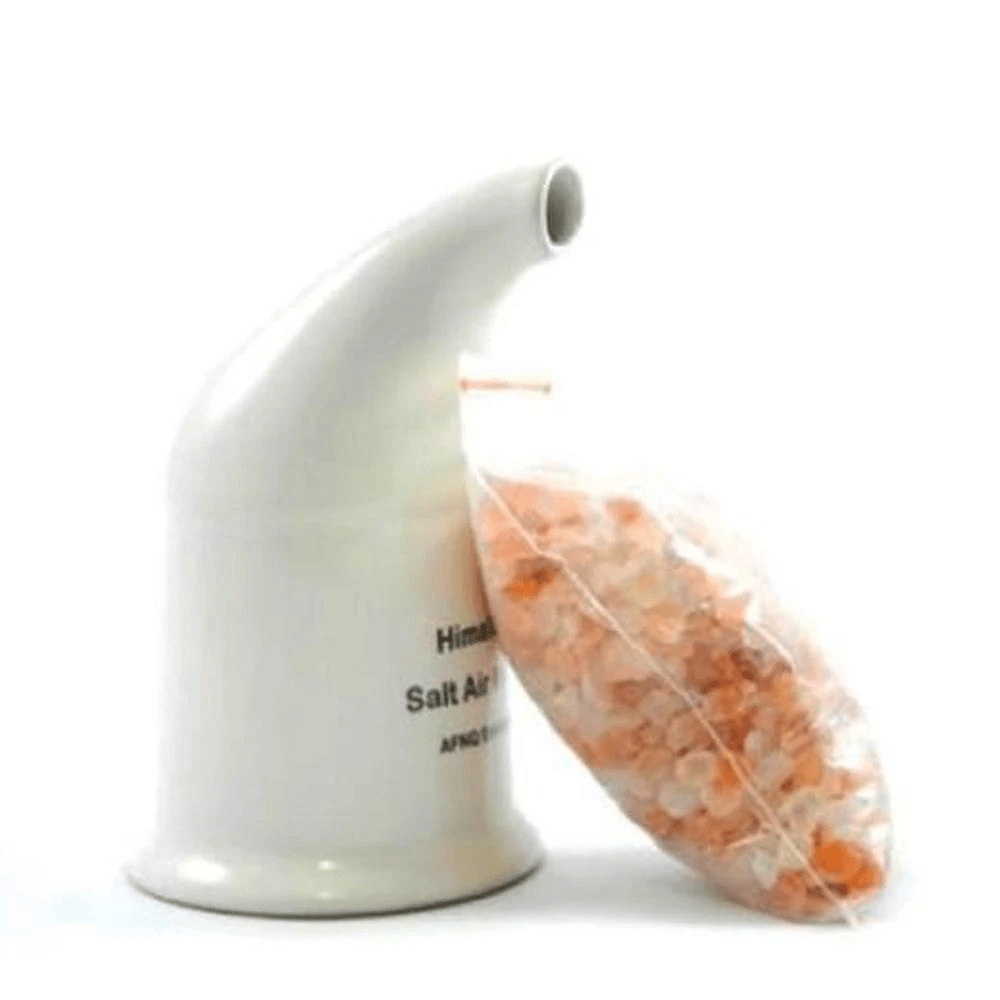Prefer to Read? Here's the Transcript 📝 Click to Open, Click to Close
Liz: This is the Aromatic Wisdom Podcast, Episode 46. In today’s show I’m going to talk about a sweet little device supports respiratory health; and chances are pretty good that if someone watches you use this device, you’re going to get teased.
Intro: You’re listening to the Aromatic Wisdom Podcast with your host, Liz Fulcher. If you’re interested in learning about Essential Oils, hearing interviews with industry experts, and discovering ways to grow your own Aromatherapy business, this is the podcast for you. For more information and show notes, visit the website at AromaticWisdomInstitute.com Now sit back. Relax. Take a deep breath and enjoy as Liz shares a dose of Aromatic Wisdom.
Hello Friends! Thank you so much for joining me today! My name is Liz Fulcher and I’ve been practicing the art and science of aromatherapy since 1991 and teaching since 1997. You can find my online classes at AromaticWisdomInstitute.Teachable.com
Okay let’s jump into the topic of the day which is, Using a Salt Pipe. Some people call it a Himalayan Salt Pipe, or a Salt Pipe Inhaler.
Here’s an overview of what I will be covering in this episode.
- What is a Salt Pipe and my personal experience of receiving benefits.
- How to use a salt pipe
- Benefits of using a salt pipe
- The best salt to use
- How often should you use your salt pipe?
- How to care for your salt pipe
- Where to purchase a salt pipe
1. WHAT IS A SALT PIPE INHALER
Let me start by being clear that what I’m talking about is a pipe-style inhaler. If you google “salt inhaler” you’ll find a variety of devices – most of them to be inhaled through the nostrils.
All the salt pipes I’ve seen have been made of ceramic. There may be ones out there made of porcelain. The type of inhaler I’m talking about today is made of ceramic, non-electric, about 6” in height with a hole at the bottom to add salt and a mouthpiece at the top. The salt pipe is a delivery system designed specifically to benefit the respiratory system, and in particular the lungs.
Using salt to support respiratory health and to respiratory wellness is not a new concept and has been around for centuries and it is called Halo therapy. The word halo is a Greek prefix meaning “salt.” It literally means Salt Air Therapy. Think about people who go to the beach to breathe in the healthy salt air, and a really popular trend now is to sit in a salt room. There are rooms made with blocks of Himalayan salt and the idea is to breathe in the salt particles to improve breathing and give you an overall sense of wellness.
2. HOW TO USE A SALT PIPE
- When you purchase your salt pipe, you should also receive a bag of pink himalayan salt inside, with the pipe. If it doesn’t pink Himalayan salt is really easy to find – you can probably even get it at your local supermarket depending on where you live. You can certainly find it at health food store, and on line. I’ll give you a link in the show notes to some places on Amazon where you can it. If you are buying it as a refill, or even for the first time, you want to get course even at the grocery store or health food shop. Make sure you get course grain salt, not fine. You want a bigger crystal.
- At the base of the salt pipe is a plug, remove it, and fill your pipe with salt crystals until it is nearly full. Place the plug security back in the hole. You’ll see that there are a lot of small holes in the base – these are to allow air to flow up through the pipe.
- Next, Place the mouthpiece between your lips and draw air in gently through your mouth, remove your mouth from the mouthpiece and hold it – so when you inhale, you put your mouth over the mouthpiece just for inhalation, you want to exhale away from the mouthpiece. Try to exhale through your nose that way the salt air if going to your lungs, your throat and out your nasal passages kind of benefits all the passages of your respiratory system. to yourYou can exhale through your nose., hold it for a few seconds, then exhale through your nose. The moisture that you are breathing in contains micron particles of the pure and mineral-laden Himalayan Pink Salt that filters eventually through the entire respiratory system.
- As you’re breathing out, do not exhale back into the device, move the pipe away from your mouth so the moisture from your out breath doesn’t get into the pipe and dampen the salt crystal. If you breathe back into the salt pipe, Do not exhale back into the device because the moisture from your breath will dampen the salt crystals inside the pipe. This is a dry therapy, so don’t add anything wet, not even essential oils
- This inhaler is safe for children ages 5 and up.
- I recommend everyone in the family have their own individual salt pipe.
3. BENEFITS OF USING A SALT INHALER
My Experience: In January of 2020 I began to notice a wheezing in my lungs, in particular after walking in the cold and cleaning a dusty area. I was given a salt inhaler several years earlier that I’d never used but had an intuitive feeling that it would be helpful. And it really was. As soon as I began feeling the tightness in my chest and begin to hear a tiny bit of wheezing, I’d inhale deeply from the salt pipe for about 5 minutes. Within a few minutes I was able to expel the mucous building up in my lungs and my breathing was more clear. I eventually saw my doctor who diagnosed me with mild adult onset asthma, actually pretty common as people get older. I have a feeling it’s because I have four cats because I never experienced this until we got the cats.
I have conventional medicine for it if need be, but I always reach first for any natural method of opening my lungs.
Now…in terms of why breathing in salt works is still a bit of mystery to me. I was able to find a ton of compelling anecdotal evidence – including my own experience.
The Salt Cave, a clinic in the United Kingdom, specializes in salt therapy. One client with COPD reports a much better quality of life following salt therapy.
“The Salt Cave changed my life. Before my first visit I was on lots of antibiotics and steroids, basically confined to my house, and I hated to be around people as my breathing was so noisy. However, this has now changed thanks to Salt Therapy. The Salt Cave lets me live again and manage my illness in a way that means I can enjoy life again. When I walk out of The Salt Cave I feel high on life. I call it my heaven on earth.”
I haven’t been able to find any hard scientific evidence on Halo therapy but I did come across this blog post by the American Lung Association that says “When fine salt particles are inhaled, they fall on the airway linings and draw water into the airway, thinning the mucus and making it easier for your body to expel it” This helps to reduce the inflammation, making you feel more comfortable AND salt has antiseptic and antibacterial effects which will further protect your respiratory system. Another way salt inhalers can support a restful night is to ease respiratory issues that sometimes prevent sleep.
I’ll put a link to my references in the SHOW NOTES.
Honesty, even if you DON”T have respiratory issues, the salt pipe can still be a good way to clean and detox your respiratory system – just like a neti pot can do. We all breathe in pollution in all of its forms – By the way, If you don’t know what a neti pot is, I’ll put a link to a blog post about it. But in a nutshell it’s a system of rinsing the sinus passages with – guess what – salty water.
From a practical aspect, the salt pipe is very easy to use, it is not expensive, it is drug free and non-invasive. It can be used by anyone from kids to the elderly.
4. WHAT TYPE OF SALT?
Why Himalaysan Salt? I have an extensive blog post all about the benefits of himalayas salt and I’ll share that link in the show notes, but in a nutshell, the benefits are: Many proponents of salt inhalers suggest the use of Himalayan salt, which they describe as a very pure salt with no pollutants, chemicals, or toxins. They also suggest that Himalayan salt has 84 natural minerals found in your body
5. HOW OFTEN SHOULD YOU USE YOUR SALT PIPE INHALER?
You can use the pipe inhaler as often as you like, but 2-3 times a day during an acute health issue, then maybe once a day as part of your regular self-care routine or if you have a chronic respiratory condition. I talk about chronic vs acute health issues in the Aromatic Wisdom Podcast episode 43. I think of the salt pipe inhaler like the neti pot – you can use it every day as part of your wellness routine or as a tool to help treat an issue that has cropped up. You can even incorporate it into a daily health routine like brushing your teeth.
6. CARING FOR YOUR SALT PIPE
Depending on how often I’m using my salt pipe, I change the crystals about once a month depending on how often I use it and if it stays dry. Where I live it gets very humid in the summer and because keeping the salt dry is crucial, I may change it more often. If the salt crystals in your salt pipe become moist or wet, clean it out, make sure it’s bone dry on the inside – I use a hair dryer if I’m in a hurry – and replace the salt.
6. WHERE TO BUY A SALT PIPE INHALER
The cost of a pipe inhaler is between US$ 13 – 20; the price will be a bit more if it includes a bag of Himalayan salt. See the Resources below for a few links to places on Amazon that sell salt pipes that I’d feel comfortable buying.
SMELL MY LIFE
I have three short stories this week of how I have used aromatherapy in my own life recently.
1. I added Patchouli in the dryer with my sheets and towels
2. I washed my kitchen floor with Coriander hydrosol
3. I addressed a compressed nerve in my elbow with an essential oil blend in trauma oil. Oils used were clove, spike lavender, helichrysum.
ASK LIZ
It’s been some time since I did an “ask Liz” segment; I’m going to be adding this segment to every episode.
A listener of this podcast contacted me with this question:
Listener Question: When using essential oils in the bath what do you use as a dispersant? Oil and water don’t mix. I know using Epsom salts is an option but do you have any others?
Liz Answer: Great question, especially for you beginners listening. You need a “fatty” product as a dispersant. Any vegetable oil will work, Aloe very gel or even full fat milk or cream. Epsom salts won’t disperse the essential oils.
CONCLUSION
That’s a wrap for the Aromatic Wisdom Podcast Episode 46.
Thank you for spending some time with me.
Until next time, Be Happy, Be Well
### END OF RECORDING ###
ABOUT TODAY’S EPISODE
If you suffer from asthma, either as a child or, like me, had it appear in adulthood, you may well find a Himalayan Salt Nasal Inhaler an invaluable resource. It can provide relief from congestion and cleanse the respiratory system. In today’s Aromatic Wisdom Podcast episode, Liz talk about how this weird-looking device can help with to relieve symptoms associated with asthma, allergies, sinus conditions, and hay fever.
This is what a Salt Pipe Inhaler looks like
WHAT YOU’LL LEARN IN THIS EPISODE
- What is a Salt Inhaler
- Who can benefit from using it
- How do you Use it?
- What type is salt should you use with this unique inhaler?
- Do you use it with or without essential oils?
- Where can you buy a salt nasal inhaler
RESOURCES and LINKS MENTIONED
- The Salt Cave, UK
- American Lung Association article about Salt Pipes
- AWP 043: Essential Oil Blending for Acute vs Chronic Health Issues
- Plant Therapy Salt Pipe (white)
- Mockins Salt Pipe Inhaler (pink)
- Nevlers ceramic Salt Pipe (blue)
- Pink Himalayan Salt (coarse crystals)
FURTHER YOUR KNOWLEDGE
Here are two blog posts I’ve written about Himalayan Pink Salt
- Pink Himalayan Salt in the Kitchen and Bath: 7 Skin and Health Benefits
- 4 DIY Body Scrub Recipes using Himalayan Salt or Organic Sugar
My Online Course
- Essential Oils for Respiratory Health Masterclass – online course
Thank you for listening, and until next time…







